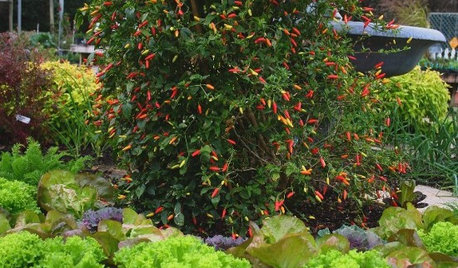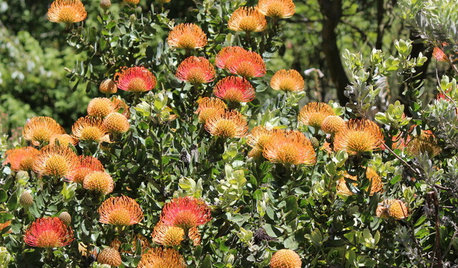Heat Setting Report-Beans, Tomatoes, Peppers
tmlgn
12 years ago
Related Stories

EDIBLE GARDENSSummer Crops: How to Grow Tomatoes
Plant tomato seedlings in spring for one of the best tastes of summer, fresh from your backyard
Full Story
LIFEKitchen Traditions: Tomato Season Meets a Family Legacy
Somewhere a Sicilian great-great-grandmother is smiling at a bowl of American-made sauce
Full Story
SUMMER FRUITS AND VEGETABLESSummer Crops: How to Grow Beans
Grow your own beans for amazing variety and healthy, convenient produce all summer
Full Story
EDIBLE GARDENS6 Summer Edibles That Can Really Take the Heat
When garden temperatures soar, these herbs and vegetables rise to the challenge
Full Story
HEALTHY HOME12 Ways to Set Up Your Kitchen for Healthy Eating
Making smart food choices is easier when your kitchen is part of your support team
Full Story
GARDENING GUIDES10 Easy Edibles for First-Time Gardeners
Focus on these beginner-friendly vegetables, herbs, beans and salad greens to start a home farm with little fuss
Full Story
GARDENING GUIDESCalifornia Gardener's June Checklist
Update your hydrangeas, catch up on tomatoes and more ways to enjoy your California garden in June
Full Story
FARM YOUR YARDHouzz Call: Home Farmers, Show Us Your Edible Gardens
We want to see where your tomatoes, summer squashes and beautiful berries are growing this summer
Full Story
GARDENING GUIDESKeep Your Cool in the Garden — Here’s What to Do in August
Don’t let summer’s heat go to your head. These U.S. gardening guides will help you make sensible choices for all of your plantings
Full Story
KITCHEN DESIGNHouzz Call: What’s Cooking in Your Kitchen?
Most of us turn to recipes, videos and culinary shows when we cook. Where do you set your cookbook, tablet or TV screen?
Full StoryMore Discussions






Okiedawn OK Zone 7
kfrinkle
Related Professionals
Essex Landscape Architects & Landscape Designers · Taylorsville Landscape Architects & Landscape Designers · Woburn Landscape Contractors · Rockland Landscape Contractors · Saint John Landscape Contractors · Thonotosassa Landscape Contractors · Wareham Landscape Contractors · Raytown Landscape Contractors · Asheville Decks, Patios & Outdoor Enclosures · Hendersonville Decks, Patios & Outdoor Enclosures · Medford Decks, Patios & Outdoor Enclosures · Miami Decks, Patios & Outdoor Enclosures · Montgomery County Decks, Patios & Outdoor Enclosures · Wheaton Decks, Patios & Outdoor Enclosures · Windsor Decks, Patios & Outdoor EnclosurestmlgnOriginal Author
soonergrandmom
tulsastorm
soonergrandmom
elkwc
elkwc
biradarcm
Okiedawn OK Zone 7
redding
tmlgnOriginal Author
redding
Okiedawn OK Zone 7
redding
Okiedawn OK Zone 7
Erod1
redding